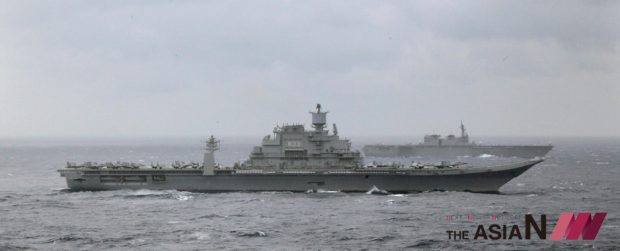The Asian Century – Key Issues
Towards the end of October, the rumblings of Asia were resounding worldwide. The new AJA motto, “New Asia, New Dynamics” is more than proving to be relevant.
Xi Jinping’s name has been written into the Chinese constitution while he is still in power. It includes a reference to his “treatise” on Socialism with Chinese Characteristics for a New Era. This endows Xi with more power than any Chinese leader since Mao Zedong. According to Chinese experts, this is also an indirect confirmation that Xi will remain the leader till 2027.
Among other things, Xi is looking at a crumbling Western world and taking China to the high table of nations globally. He has already taken up a path of muscle-flexing in Asia and even in the global arena, with the One Belt One Road (OBOR) initiative. India is the only South Asian country that has not signed an agreement with the initiative.
On the contrary, Japan, USA, and India recently met in New York towards building strategically important ports and other infrastructure in the Indo-Pacific region. This is meant to balance China’s bid to strengthen its regional influence.
This may not have made for international headlines yet, but is a definite signal of new strategic partnerships between nations in the context of the Asian continent. In New York, there was mention about matters of concern like the 3,000 km Pakistan-China Economic Corridor. In 2015, China and Pakistan signed an agreement on this, with a 50 billion-dollar investment from China. It is in context of OBOR and such moves by China that the present US Secretary of State, Rex Tillerson, refers to as China’s “predatory economics” that need balancing.
Close on heels of the New York meet, Rex Tillerson visited India during which there were stop-overs in Afghanistan and Pakistan. Tillerson claims the US now has a ‘conditions-based approach’ with the latter.
The conditions are largely linked to Pakistan’s role in shielding the terror groups that are of concern to both the US and India. It is indicated that Pakistan has had some help from China. For the US, the issue is mainly Afghanistan and the role of the Taliban, which remains influential across Pakistani borders. The US has now taken up “watching” if Pakistan is taking the steps that Washington thinks are necessary to clamping down the threat of terrorism.
In an earlier statement, Tillerson had stated that Pakistan and China are “disruptive spoilers” in the region. He now talks of a 100-year framework for US-India relations. With clear indications that Afghanistan needs India’s help to build a strong nation that can withstand attack in any form from any source.
Before this visit, at a Washington DC think tank Tillerson had already spoken with emphasis about a free and open Indo-Pacific region. He spoke about the crucial role of India and the US for achieving this goal. There, he also mentioned that while China has risen, it has done so “less responsibly than India”. This indirectly hints at India itself becoming a rising power—at least regionally.
During his visit to India, Tillerson stated that the strengthening of ties between US and India at this stage would have an impact on regional and global stability and prosperity.
In light of all of the above, the resounding victory that brings Shinzo Abe back to power is not without import. His victory makes him the longest serving Prime Minister of Japan. There are also indicators about Abe that mirror Xi Jinping’s stature in China.
Earlier this year, the Liberal Democratic Party (LDP) changed its rules. It now allows a person to stay in office for three terms instead of two. If Abe is re-elected as the President of LDP in 2018, he may stay in power until 2021.
Abe is also targeting to change the pacifist constitution of Japan which does not permit it to wage war or have full-fledged armed forces. North Korea’s nuclear “antics” are seen as a driving point for the constitutional change; an issue that Abe used in his election campaign as well.
The LDP projected itself as most capable of dealing with the North Korea crisis. Abe will strengthen his ties with the US and countries like India to achieve this goal. Abe also sees China as a threat to the world. He is expected to make many strategic moves to offset China’s growing economic-political influence and soft power and act in tandem with Washington to deal with a China-protected North Korea.
All these power shifts have great significance for Asia and how it will rise in the coming decades. The role of AJA and the Journalists Association of Korea become critical in this context. They are well positioned to bringing the Asian voice to global mainstream media through regular conferences that provide analysis and predictions that the West may not yet clearly see.
By Neelima Mathur




























































